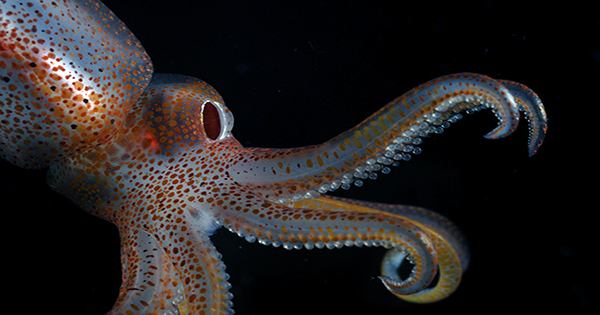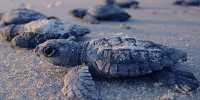Symbiosis brings together several iconic pairs of the natural world (where would Nemo live without an anemone?). This unexpected relationship comes as two separate entities gain an advantage from interacting with each other. In the case of the Hawaiian Bobtail squid (Euprymna scolopes), it was between itself and a type of bacterium that colonized its light organs within hours of squid hatching.
Here, they set out a hell of a light show for young squid that benefit from counterillumination: the use of light to mask shadows from an animal’s silhouette or its environment. Species have long studied as an example of mutually beneficial symbiosis (in the most literal sense of the word). Despite all this insightful research, a new research paper published in the MBO Journal has made a preliminary discovery of what stimulates bacteria to colonize this squid. Sanchez is an associate professor of chemistry and organic chemistry at UC Santa Cruz, Sanchez said.
When bobtail squid hatches, they are rusty and completely flashy. After a few hours, their light organs are flooded with Vibrio fisheries, a type of bacterium that is quite scattered in the ocean environment and still somehow integrates itself into the thumb-shaped squid’s body. To find out why V. Fishery was attracted to these daddy cephalopods – and why some strains are better in the colony than others – it explored whether chemical signals could be the root cause. Using imaging mass spectrometry, Sanchez and colleagues were able to visualize the spatial distribution of chemicals between squids.
The techniques used to map the chemicals on top of others so that it gives you a chance to land in a sample even when you are not sure what you are looking for since the molecules do not need to label for them as displayed. Happily, the dark shot shed a lot of light on a small but original molecule in the samples. A group of cyclic diketopiperazine, special diketopiperazine (DKP- cyclo (D-histidyl-L-proline) or CHP-3), from the family diketopiperazine (DKP) are found inside the colonic colonial light organs of squids.
Other experiments have shown that V. fishery also had variations, as it found in higher concentrations in some strains than in others. To get one last look at the effects of dipeptide’s in bioluminescence, they supplemented V fisher culture with CHP-3 and consequently saw a spike in the illuminated joint with an increase in the concentration of CHP-3. “We know that it was produced in the first few hours of colonization when symbiosis was established and we also know that it affects bacterial luminescence, and bioluminescence and colonization are combined,” Sanchez said, although the exact role and process behind it was association – remains vague.
“We don’t know the processes involved, we’re working on it now, but we thought there was a lot more work to be done than there is. The next step for us is to discover the gene cluster and how to find it.”















